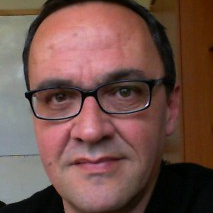Nano-Objects and Nanomaterials
A special issue of Nanomanufacturing (ISSN 2673-687X).
Deadline for manuscript submissions: closed (15 February 2024) | Viewed by 3017
Special Issue Editors
Interests: nanoparticle synthesis; self-assembly; nanofabrication; nanophotonics; nanomechanics
Interests: semiconductor nanostructures; optical properties; energy transfer; sensors; carbon dots from biowaste
Special Issues, Collections and Topics in MDPI journals
Special Issue Information
Dear Colleagues,
The ability to manufacture new structures enables new science and technology—especially in nanoscience and nanotechnology. Nanomaterials made via both top-down and bottom-up approaches have attained previously untapped territories in the field spanning nano-photonics, nano-electronics, and nano-mechanics. To echo that spirit, this Special Issue is designed to highlight the importance and recent progress of nano-objects and nanomaterials. The scope of this Special Issue includes but is not limited to the synthesis and modification of colloidal nanoparticles (bottom-up); techniques based on nano-lithographic fabrication methods (top-down); efforts that take advantage of both top-down and bottom-up strategies; and any further application of the generated nanostructures and devices in physical, biomedical, chemistry, environmental science, and life science experiments. We encourage researchers from all areas of nanomanufacturing, nano-synthesis, nanoengineering, and nanotechnology to submit abstracts for this Special Issue.
Dr. Wenjie Zhou
Prof. Dr. Sotirios Baskoutas
Guest Editors
Manuscript Submission Information
Manuscripts should be submitted online at www.mdpi.com by registering and logging in to this website. Once you are registered, click here to go to the submission form. Manuscripts can be submitted until the deadline. All submissions that pass pre-check are peer-reviewed. Accepted papers will be published continuously in the journal (as soon as accepted) and will be listed together on the special issue website. Research articles, review articles as well as short communications are invited. For planned papers, a title and short abstract (about 100 words) can be sent to the Editorial Office for announcement on this website.
Submitted manuscripts should not have been published previously, nor be under consideration for publication elsewhere (except conference proceedings papers). All manuscripts are thoroughly refereed through a single-blind peer-review process. A guide for authors and other relevant information for submission of manuscripts is available on the Instructions for Authors page. Nanomanufacturing is an international peer-reviewed open access quarterly journal published by MDPI.
Please visit the Instructions for Authors page before submitting a manuscript. The Article Processing Charge (APC) for publication in this open access journal is 1000 CHF (Swiss Francs). Submitted papers should be well formatted and use good English. Authors may use MDPI's English editing service prior to publication or during author revisions.
Keywords
- nanomaterials
- nanofabrication
- nanoparticles
- nanophotonics
- nanoelectronics
- nanomechanics
- self-organization




